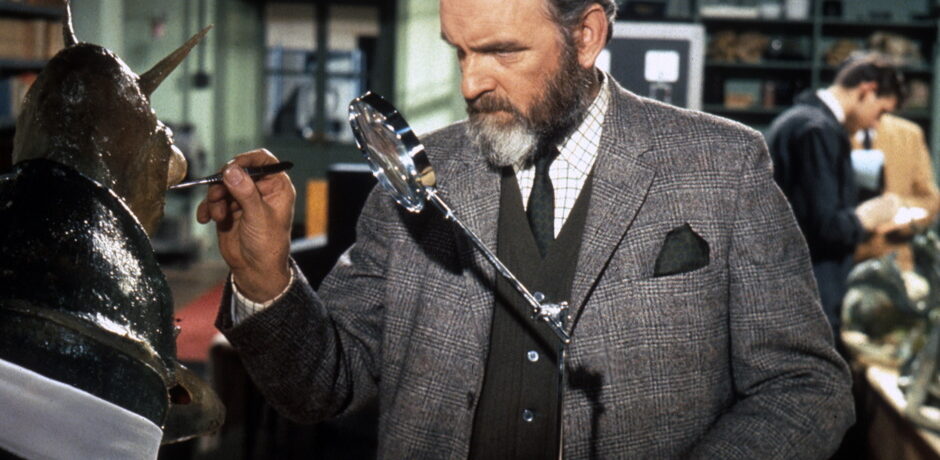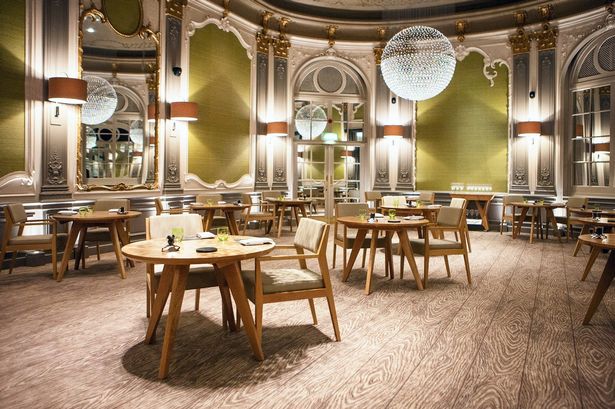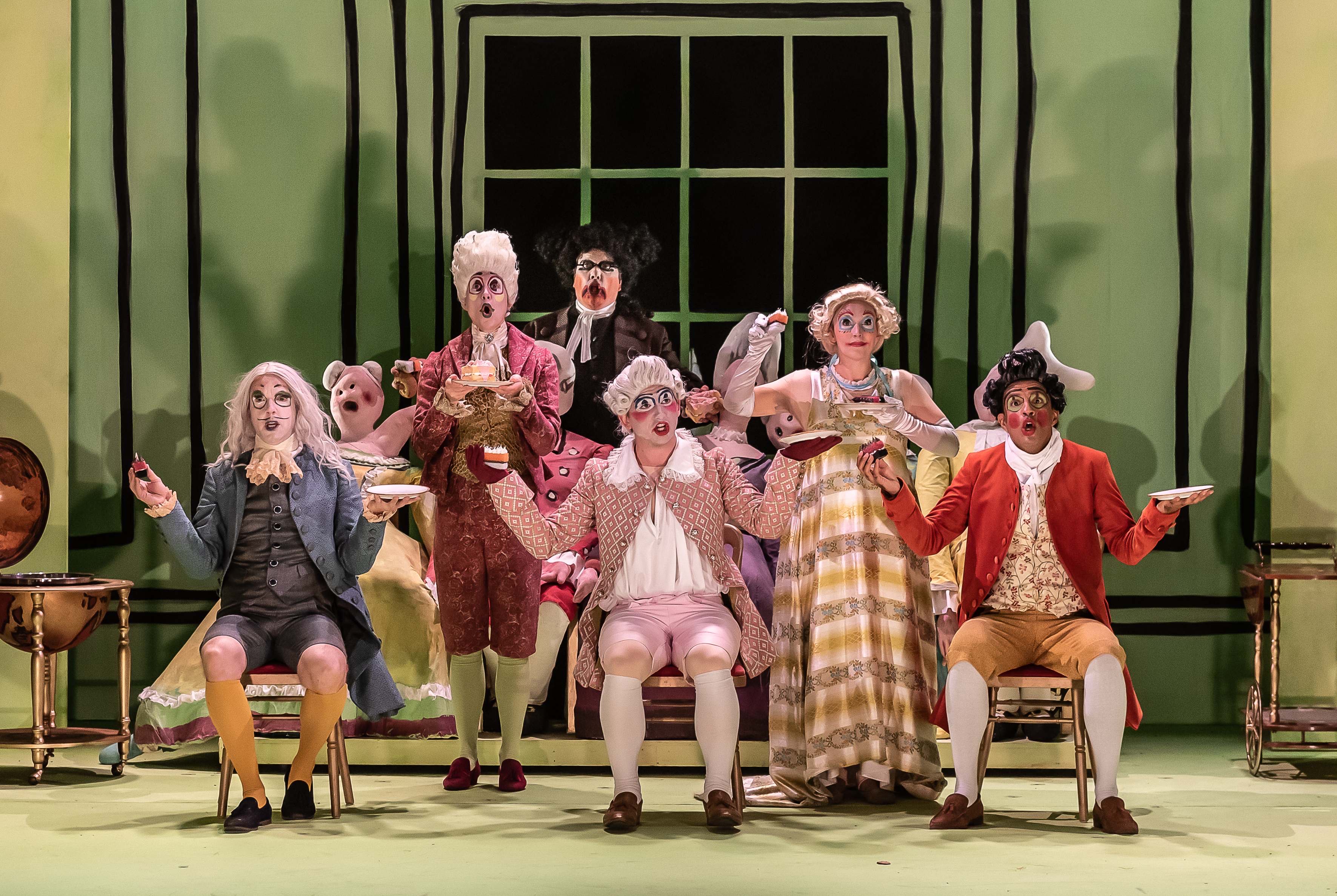Deansgate is one of the most well-heeled areas of Manchester city centre. It’s home to large department stores, major shopping developments and the Beetham Tower. But it wasn’t always this way. Back in the late 19th century, the south end of Deansgate was dominated by slum housing. And that’s precisely why the John Rylands Library was built there.
John Rylands never got to see the library which bears his name. Originally from a family of cotton manufacturers in St Helens, Rylands set up business in Manchester and became the city’s first cotton millionaire. At the age of 74, he married his third wife, Cuban-born Enriqueta. After John died 13 years later, Enriqueta set about planning a world-class library in his memory. It opened to the public on New Year’s Day 1900.
Today the library is a delightful anomaly, a dark, neo-Gothic sliver among the area’s gleaming metal and glass. To say it’s worth a look inside is an almighty understatement. Northern Soul was lucky enough to be shown around by Liza Leonard, the library’s visitor engagement co-ordinator. For Leonard, the appeal of working in such extraordinary surroundings has never worn thin. Crossing the modern walkway over into the original building, she remarks, “It’s so beautiful, isn’t it? One of my colleagues describes this bridge as like stepping back in time.”
 She gestures towards an original light fitting, rendered in the shape of a cotton plant. “We were the first building in Manchester to have electric lighting. You’ll see all this trunking around. It looks like it’s been installed by plumbers, because there weren’t any electricians then.” Equally, there was no national electricity supply. “We have our own generator. It was only fairly recently that we came on the Grid. So even though it’s a really old-looking building, obviously it’s neo-Gothic, it was actually a really hi-tech building for its day, with its own electrical generator, lighting, an air conditioning system, telephones…”
She gestures towards an original light fitting, rendered in the shape of a cotton plant. “We were the first building in Manchester to have electric lighting. You’ll see all this trunking around. It looks like it’s been installed by plumbers, because there weren’t any electricians then.” Equally, there was no national electricity supply. “We have our own generator. It was only fairly recently that we came on the Grid. So even though it’s a really old-looking building, obviously it’s neo-Gothic, it was actually a really hi-tech building for its day, with its own electrical generator, lighting, an air conditioning system, telephones…”
There are high windows containing brightly coloured glass, but it’s particularly thick. “You can’t really see out of them. This wasn’t a very nice area in Victorian times so the idea behind that was not to see outside but still get light in. A way that you could escape from the outside world, really. The building was a gift for the people of Manchester.”
A surprising amount of the original 1900-era fixtures and fittings are still intact. “Some of the glass has been restored,” says Leonard. “There was, I believe, only one window broken in the Second World War. But it’s in fairly good nick. We’ve constantly got building surveys going on and repair work and so on. It’s Grade I Listed so you’ve got to look after it.”
The library was designed by Basil Champneys, architect of many notable Oxbridge college buildings, and constructed out of hand-carved Cumbrian sandstone, a painstaking process which took ten years.
“Enriqueta really wanted to have the best. She didn’t accept anything but. She had good attention to detail, I think. She was quite involved throughout the process and actually some people who she was working with found her a little bit demanding. She got everything that she wanted, basically.”
A case in point is the wood used throughout John Rylands Library, right down to the signage stands. “It’s all Polish oak, which is apparently the best quality oak that you can buy. Money wasn’t an object for her. The library cost £200,000 to build. I mean, nowadays, that would be millions.”
As we make our way through the building, we come to the splendid Spencer and Crawford Rooms, so named for the book collections they house.
Leonard says: “Originally this was going to be the library, where the general public would come and look at the books. Upstairs, which is now the Historic Reading Room, was going to be a training college for non-conformist ministers. Enriqueta and John were both non-conformist Christians. But then she bought two book collections while the building was being built.”
 One collection was bought from the down-on-his-luck fifth Earl of Spencer – that is, the same Spencer family that later produced Lady Diana.
One collection was bought from the down-on-his-luck fifth Earl of Spencer – that is, the same Spencer family that later produced Lady Diana.
“The Earl of Spencer who sold the collection wasn’t the collector. It was his grandfather [the second Earl] who’d done the collecting. The Earl who sold it was a gambler and evidently he couldn’t have been that good because he had to sell his library. It was considered to be one of the world’s best libraries at the time and he sold it to Enriqueta for £200,000.”
A tidy sum – as much as the building itself – but well worth it.
“In the Spencer collection we’ve got some really important books. We’ve got the Gutenberg Bible, we’ve got Shakespeare’s First Folio, and then some really lovely examples of early printed books like Audubon’s Birds of America. It’s an amazing book – massive, and with the most incredible paintings of birds.”
Likewise, the Crawford collection, purchased from the 26th Earl of Crawford, contains many rare treasures from around the world. Leonard explains: “When Enriqueta bought those two collections, it changed what this place was because they were such big collections. That’s when it became just a library, rather than being a training college as well.”
Making these centuries-old books available to all today is problematic, but anyone can become a member of the library and entry is free. Requests can be made to see rarer titles for specific research purposes. Otherwise, the library holds themed exhibitions around its extraordinary book archive. Northern Soul visited at the tail end of Darkness and Light, an examination of Gothic literature, architecture and anatomy, exploring how all fields crossed over – a fitting subject in these surroundings. Visitors were able to see first editions of Gothic hits such as The Castle of Otranto and The Monk, as well as Jane Austen’s Northanger Abbey which lampoons the then-fashionable genre in passing.
 Another space is the Rylands Gallery which displays a variety of books from the collection in atmospherically-controlled cases, changing every six months. At the moment, this includes pieces of history such as a French Revolution calendar (featuring a ten-day week and different names for the months) that didn’t last long. Similarly, there’s what Leonard calls “our star piece, which loads of people travel to see”: shards of papyrus which represent the earliest known fragment of the New Testament, dated to 125AD.
Another space is the Rylands Gallery which displays a variety of books from the collection in atmospherically-controlled cases, changing every six months. At the moment, this includes pieces of history such as a French Revolution calendar (featuring a ten-day week and different names for the months) that didn’t last long. Similarly, there’s what Leonard calls “our star piece, which loads of people travel to see”: shards of papyrus which represent the earliest known fragment of the New Testament, dated to 125AD.
Caring for a priceless book collection such as this is a serious business. “Stored behind the scenes we’ve got rolling stacks and there is a temperature humidity controller. We’ve got one of those gas/air systems, so if there was a fire the room fills with gas and nothing will burn. So the books will always be all right.”
We pass by the lavish original entrance where the public would come in from Deansgate. “It’s real Victorian grandeur, with all these amazing pillars. They don’t all need to be there, but they look nice. It’s all for show, really.”
Looming from the stairway to greet visitors is a large statue of three figures representing science, the arts and theology, things that Enriqueta felt were really important. By the doorway, Leonard points out one of her favourite items in the library, an ornate Victorian umbrella stand. Northern Soul takes the opportunity to visit the original Victorian toilets in the basement, purely for research purposes you understand.
Finally, we’re ready to see one of the library’s most celebrated areas: the Historic Reading Room. As Enriqueta originally intended, it’s almost cathedral-like, a long room with extremely high, ornate ceilings and a second tier around. It’s gobsmacking, even by the standards of the rest of the building. Besides reading, it’s used for free film screenings (The Cabinet of Dr Caligari enjoyed a round of applause recently, apparently) and for more exhibition space.
At the entrance to the hall is the statue of an earnest-looking figure. “There’s no name on this, so people quite often ask who she is or they think it might be Queen Victoria.” In fact, it’s our old friend Enriqueta Rylands. “She didn’t want a statue. but the compromise was that her name isn’t on it.” Leonard points to a matching statue at the far end. “That’s John at the bottom there.”
 There are windows along the hall, each dedicated to a certain discipline. “You’ve got the arts window, you’ve got political thinkers, musicians, artists. Then the window at the bottom is the theology window, with saints, Bible figures and religious thinkers as well. Even though it looks like a church, that window is really one of the only outright religious elements in the building.
There are windows along the hall, each dedicated to a certain discipline. “You’ve got the arts window, you’ve got political thinkers, musicians, artists. Then the window at the bottom is the theology window, with saints, Bible figures and religious thinkers as well. Even though it looks like a church, that window is really one of the only outright religious elements in the building.
There are statues all the way down the side of the hall, too. “Enriqueta chose who they were. They come in pairs, so the ones opposite each other are from the same field.” We come to a statue of Johannes Gutenberg, who printed the early Bible which the fifth Earl of Spencer sold to the library all those years ago.
Leonard says: “There’s an interesting story about this one. You know what I was saying about Enriqueta’s attention to detail, how she only wanted the best? Well, apparently on the first statue that was made of Gutenberg, the shoes were too pointy. I don’t really know how she knew how pointy his shoes were, but it got remade because of it.”
Enriqueta’s demanding nature may well have caused headaches for the artists she employed but, looking at the John Rylands library today, it has to be said that she was on to something. Not for nothing is it regarded as one of Manchester’s most beautiful buildings. If you’ve neglected to visit, set an afternoon aside forthwith and make the trip. It’s genuinely enchanting.
With grateful thanks to Liza Leonard
http://www.library.manchester.ac.uk/rylands/
A new exhibition, Magic, Witches & Devils in the Early Modern World, runs at the library until August 21, 2016. More details here.
Photos by Chris Payne






































